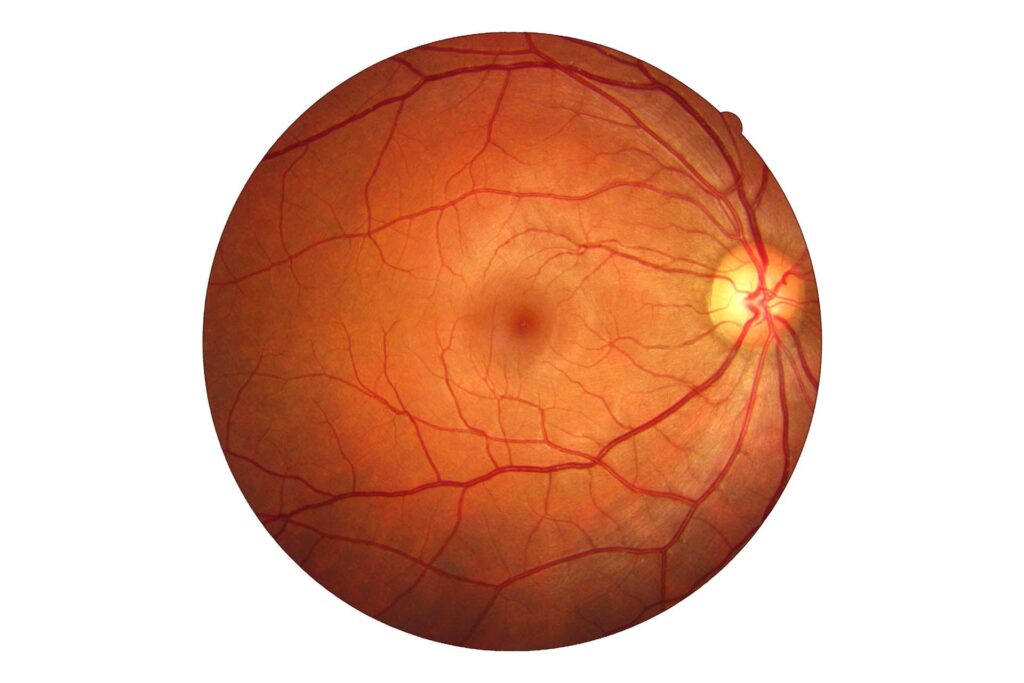
Retinal diseases are a group of conditions that affect the retina, which is the thin layer of tissue at the back of the eye responsible for sensing light and sending visual signals to the brain. These diseases can lead to vision impairment or blindness if left untreated. Some common retinal diseases include:
1. Macular Degeneration:
– Age-related Macular Degeneration (AMD): A progressive condition affecting the macula (the central part of the retina), leading to loss of central vision. It is the leading cause of vision loss in older adults. There are two types:
– Dry AMD: Gradual thinning of the macula.
– Wet AMD: Abnormal blood vessels grow under the retina and leak fluid or blood, leading to rapid vision loss.
2. Diabetic Retinopathy:
– A complication of diabetes that affects the blood vessels in the retina. It can cause the blood vessels to swell, leak, or grow abnormally, leading to vision loss. It’s one of the leading causes of blindness in adults.
3. Retinal Detachment:
– This occurs when the retina separates from the back of the eye, cutting off its blood supply. It is a medical emergency and requires prompt treatment to prevent permanent vision loss. Symptoms often include a sudden onset of floaters, flashes of light, and a shadow over part of the visual field.
4. Retinitis Pigmentosa:
– A group of genetic disorders that cause the gradual degeneration of the retina, leading to night blindness and loss of peripheral (side) vision. It progresses slowly but can lead to significant vision impairment over time.
5. Macular Hole:
– A small break in the macula that can cause blurred or distorted central vision. It usually occurs in people over 60 and may be related to the natural aging process.
6. Central Serous Retinopathy:
– A condition where fluid builds up under the retina, often affecting the central vision. It is usually temporary but can cause vision loss if the fluid buildup persists or recurs frequently.
7. Uveitis:
– Inflammation of the uvea, which can affect the retina and lead to symptoms like eye pain, redness, blurred vision, and floaters. It can be caused by infections, autoimmune diseases, or trauma.
8. Retinal Vein Occlusion:
– A blockage in one of the veins draining blood from the retina, leading to swelling, bleeding, and vision loss. It is similar to a stroke in the eye and is more common in older adults with conditions like hypertension or diabetes.
Symptoms of Retinal Diseases:
– Blurred or distorted vision
– Floaters (small spots or threads floating in your vision)
– Flashes of light
– Loss of peripheral vision
– Loss of central vision
– Sudden shadow or curtain over part of the visual field
Treatment:
– Laser therapy: Used to seal blood vessels, prevent fluid leakage, or repair retinal tears.
– Injections: Medications injected into the eye can treat diseases like wet AMD or diabetic retinopathy.
– Vitrectomy: A surgery to remove the vitreous gel in the eye, often used in cases of retinal detachment or macular holes.
– Lifestyle changes: Managing underlying conditions like diabetes or high blood pressure can help prevent or slow the progression of retinal diseases.
Early detection and prompt treatment are crucial to prevent permanent vision loss from retinal diseases. Regular eye exams are essential, especially for people at risk.